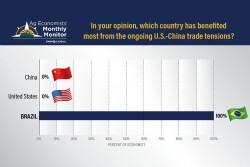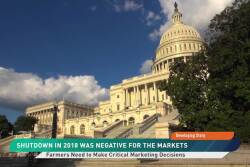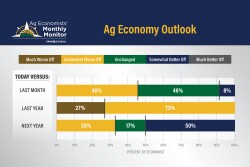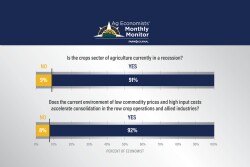Farm Business - General
Strong production numbers and government policies support the thesis of higher costs for longer.
Beijing’s refusal to buy American and its pivot to Brazil could be less about economics and more to do with politics. “It’s a calculated decision about control and national leverage, not about getting the cheapest beans,” says one ag economist.
The senior senator from Iowa says the president ‘has to’ get an agreement made that will enable trade between China and the U.S. to resume.
Various programs and reports are on hold. Among them are EQIP and SDRP. Also in jeopardy of being delayed or cancelled is the October WASDE, due this Thursday.
There’s light at the end of the tunnel, but we might not see it completely turn around for two to three years,” says Grant Gardner, University of Kentucky ag economist.
Farm Journal’s September Ag Economists’ Monthly Monitor found nearly half of the ag economists surveyed say the U.S. ag economy is worse off than a month ago and will remain depressed or even worsen over the next 12 months.
Use one or more of these tips to reduce expenses, reallocate resources and build a fertility program that works well for your farm and gives you some peace of mind in the process.
The crop is drying down rapidly, given the weather conditions across much of the country. Agronomists are concerned farmers will combine fields too late and advise starting at 13% moisture or even higher.
Union Pacific is pursuing an acquisition of Northfolk Southern but will have to meet an elevated standard before being approved. The merger could be in opposition to President Trump’s executive order on monopolies.
Two global factors could break the trend, while a focus on efficiency could bring short-term opportunities for farmers










